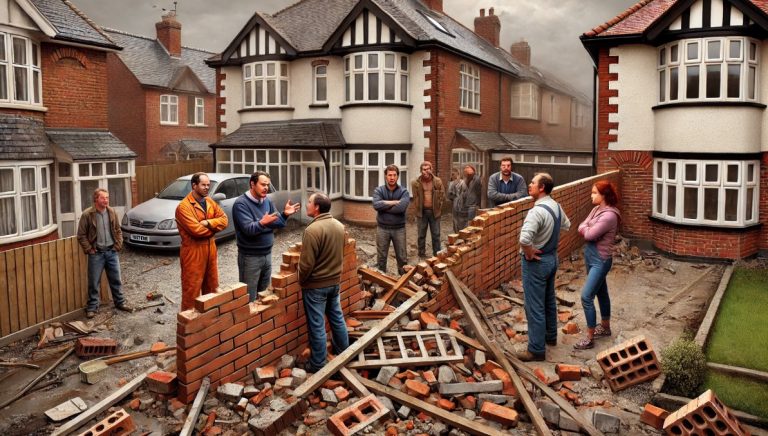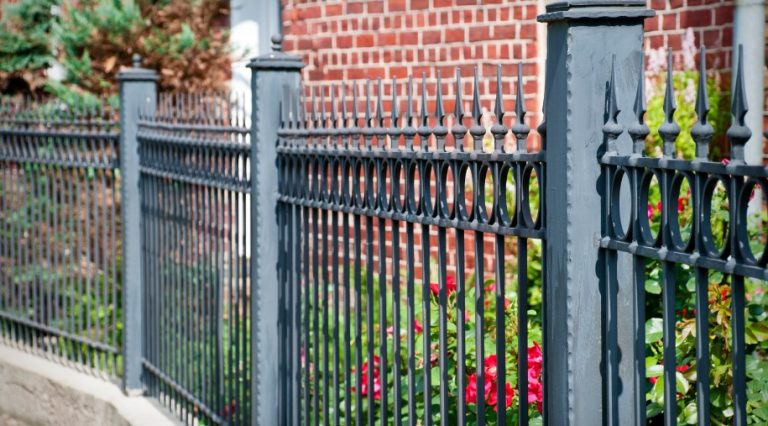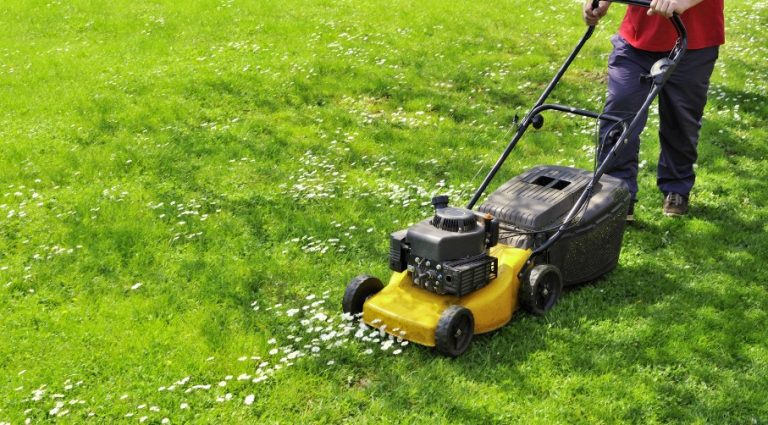Living in close proximity to neighbours in the UK can sometimes lead to disagreements over property boundaries, particularly when it comes to fences. A common issue homeowners face is whether their neighbour has the right to lean objects against their fence.
This might seem trivial at first, but it can quickly escalate into a larger dispute, especially if the fence is damaged or the action is seen as an encroachment on property rights.
In this blog, we will break down the legal aspects surrounding fence ownership, UK property laws, and whether your neighbour can legally lean things on your fence. Knowing your rights and responsibilities as a property owner can help prevent disputes and foster better relations with your neighbours.
Understanding Fence Ownership in the UK
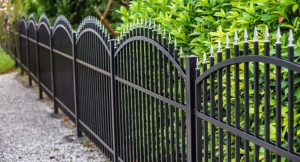
Before addressing whether a neighbour can legally lean objects on your fence, it’s crucial to understand who owns the fence in question. Fence ownership is not always straightforward, and it plays a key role in determining what can or cannot be done.
- Property Deeds: The most reliable way to confirm fence ownership is by checking the property deeds. These legal documents often contain information on which boundary markers or fences belong to which property. Look for “T” marks on the boundary plans, as these indicate ownership. If the “T” mark is on your side of the boundary line, the fence is yours. If there are no “T” marks, ownership may need to be inferred from the positioning of the fence relative to the boundary or through neighbourly agreements.
- Shared Ownership: In some cases, fences are shared between two properties. These are known as “party fences” and are akin to party walls. Both neighbours share responsibility for the fence’s maintenance, but this does not necessarily mean that one neighbour can use the fence in ways that affect the other without mutual agreement.
- Sole Ownership: If the fence is solely owned by you, you have complete control over it. However, if it’s your neighbour’s fence, they have the right to determine what happens to it, provided their actions don’t infringe on your property rights. For example, they can’t allow the fence to lean into your property or cause damage.
Knowing who owns the fence helps clarify responsibilities and rights, making it easier to address any potential issues regarding its use.
Legal Boundaries: What Does UK Law Say About Fences?
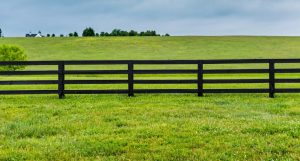
In the UK, laws surrounding property boundaries are well-established, and they provide a clear framework for dealing with disputes over fences. The most relevant legislation here is the Party Wall Act 1996, which deals primarily with shared walls and boundaries. However, the principles behind the act extend to fences and boundary lines between properties.
Here’s what the law says about fences:
- Boundary Features: Fences are often considered boundary features that define where one property ends and another begins. However, just because a fence marks a boundary doesn’t necessarily mean both neighbours have rights over it. If the fence is on your land, it’s part of your property, and the neighbour cannot use it in a way that infringes on your rights.
- Trespass and Encroachment: Leaning objects against a fence can, in some cases, be considered trespass. Trespass occurs when someone enters or uses your property without permission. If your neighbour leans objects like ladders, bikes, or garden tools against your fence without consent, they may be encroaching on your property. This can become a legal issue, especially if it causes damage to the fence or interferes with your enjoyment of your property.
- Fence Maintenance and Damage: UK property law also holds that if a fence is damaged by a neighbour’s actions—whether intentional or accidental—they may be liable for repairs. This includes cases where a neighbour leans heavy objects against the fence, causing it to warp, sag, or deteriorate faster than it otherwise would.
Fences that are entirely within one property’s boundary are solely the responsibility of that property owner. If the fence is a shared structure, both neighbours may have rights and obligations regarding its upkeep, but one neighbour cannot use the fence in a way that negatively impacts the other.
Can My Neighbour Legally Lean Things on My Fence in the UK?
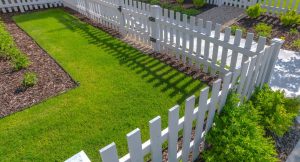
The direct answer is no, your neighbour does not have the legal right to lean things on your fence without your permission.
This is considered an infringement on your property rights, and in some cases, it could lead to legal action. The key legal issues here are trespassing and encroachment, both of which involve one party unlawfully using or occupying another party’s property.
- Trespassing: If a neighbour leans objects on your fence, particularly heavy items like garden tools, ladders, or even large plants, they could be considered trespassing. Trespassing occurs when someone intentionally or unintentionally encroaches on another person’s land without permission. Leaning objects against the fence that belongs to you can be viewed as them using your property for their own purposes without consent.
- Encroachment: Over time, if a neighbour continuously leans things on your fence and this causes the structure to degrade, bend, or otherwise change, this could be classified as encroachment. Encroachment is when a neighbour’s actions cause a physical intrusion onto your property, leading to damage or altering the property in some way.
- Common Scenarios: Common instances where this might occur include a neighbour leaning garden tools, such as spades or rakes, against your fence, placing plant pots close to or against the fence, or using the fence to support a trellis or a garden feature. While these might seem harmless, over time, they could cause damage to the fence, and even if no damage occurs, you have the legal right to object to the use of your property.
It’s important to remember that while your neighbour may not intend to cause harm, you have the right to ask them to stop leaning things on your fence.
What to Do If a Neighbour Leans Objects on Your Fence?

If you discover that your neighbour is leaning things against your fence, it’s important to handle the situation carefully. A small misunderstanding can sometimes escalate into a full-blown dispute, so it’s best to start with a calm and diplomatic approach.
1. Talk to Your Neighbour: The first step is always to have a friendly conversation. Many neighbours aren’t aware that their actions are problematic, and they may be happy to rectify the situation once they understand your concerns. Let them know that the fence is your property (or shared property, if that’s the case) and that leaning objects on it could cause damage or trespass on your space.
2. Document the Issue: If your neighbour doesn’t stop or if they repeatedly ignore your requests, it may be time to document the problem. Take clear photos or videos of the objects they’re leaning on the fence and any damage it might be causing. This documentation could be useful if the dispute escalates to a legal level.
3. Write a Formal Letter: If verbal communication fails, the next step is to send a formal letter outlining your concerns. In the letter, clearly explain the problem, referencing property laws regarding trespassing and encroachment, and politely request that they stop leaning objects on the fence.
4. Seek Legal Advice: If the situation persists or worsens, you may need to consult with a solicitor who specialises in property disputes. They can advise you on your legal options, which may include sending a solicitor’s letter or even pursuing legal action in court to resolve the issue.
5. Consider Mediation: If you want to avoid the cost and stress of a legal battle, mediation can be a good alternative. A professional mediator can help both you and your neighbour find a compromise and avoid further conflict.
By addressing the issue promptly and professionally, you can often resolve the situation without it turning into a major dispute.
Avoiding Boundary Disputes in the Future
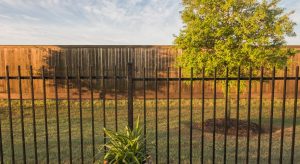
Boundary disputes can be stressful and costly, but they’re often preventable with clear communication and mutual respect. Here are some strategies to avoid boundary conflicts with your neighbours:
- Clearly Define Boundaries: It’s essential to know exactly where your property begins and ends. If there’s any uncertainty, you can consult your property deeds or even hire a surveyor to clarify the boundary lines.
- Install Clear Markers: Setting up clear boundary markers like posts or stones can help delineate property lines and avoid future confusion over where fences or walls should go.
- Agree on Maintenance Responsibilities: If the fence is shared between you and your neighbour, it’s a good idea to have a clear agreement in place about who is responsible for maintenance. This will help avoid disputes when repairs or upgrades are needed.
- Communicate Before Changes: If you plan to modify or replace a fence, it’s courteous to inform your neighbour before making any changes. This will ensure both parties are on the same page and can prevent disagreements.
By being proactive and maintaining a good relationship with your neighbours, you can often prevent boundary disputes from arising.
Conclusion
Understanding your rights and responsibilities regarding fences is essential for maintaining good neighbourly relations and protecting your property. If a neighbour leans objects against your fence without permission, it is within your rights to ask them to stop and take action if necessary.
While most disputes can be resolved through communication, it’s important to know when to seek legal advice to protect your property rights. By staying informed and addressing issues calmly, you can often avoid disputes and maintain a peaceful living environment.
What Are the Faqs About Whether Neighbours Can Lean Things on My Fence UK?
Can my neighbour attach things to my fence without permission?
No, your neighbour cannot legally attach items such as trellises, hanging baskets, or decorations to your fence without your consent. The fence is part of your property, and any alterations to it require your approval.
What can I do if my neighbour damages my fence?
If your neighbour damages your fence, whether intentionally or accidentally, they are likely responsible for repairing or replacing it. Start by discussing the damage with them to see if they are willing to cover the cost of repairs. If they refuse, you may need to involve legal action to recover the costs.
How can I resolve a boundary dispute without going to court?
In many cases, boundary disputes can be resolved without going to court through mediation. A neutral third party can help facilitate a discussion between you and your neighbour to reach a mutually acceptable solution. Mediation is often quicker, cheaper, and less stressful than court proceedings.
Are there height restrictions for fences in UK law?
Yes, in the UK, fences over a certain height require planning permission. Typically, fences that are taller than 2 metres (6.6 feet) need approval from the local planning authority. If your neighbour plans to build a taller fence, they should check with their council and obtain the necessary permits.
Who is responsible for repairs if a shared fence is damaged?
For shared fences, both neighbours are generally responsible for repairs and maintenance. However, the exact division of responsibility may vary based on the terms outlined in the property deeds or any agreements between the neighbours.
Can I remove objects my neighbour has leaned on my fence?
Yes, if your neighbour refuses to remove objects they’ve leaned against your fence, you have the right to remove them yourself. However, it’s always best to inform your neighbour before taking any action to avoid escalating the situation.
What rights do I have over a boundary fence I own?
As the owner of a boundary fence, you have full control over its maintenance, usage, and any modifications, provided you comply with local planning regulations. Your neighbour has no right to use or alter the fence without your consent.

